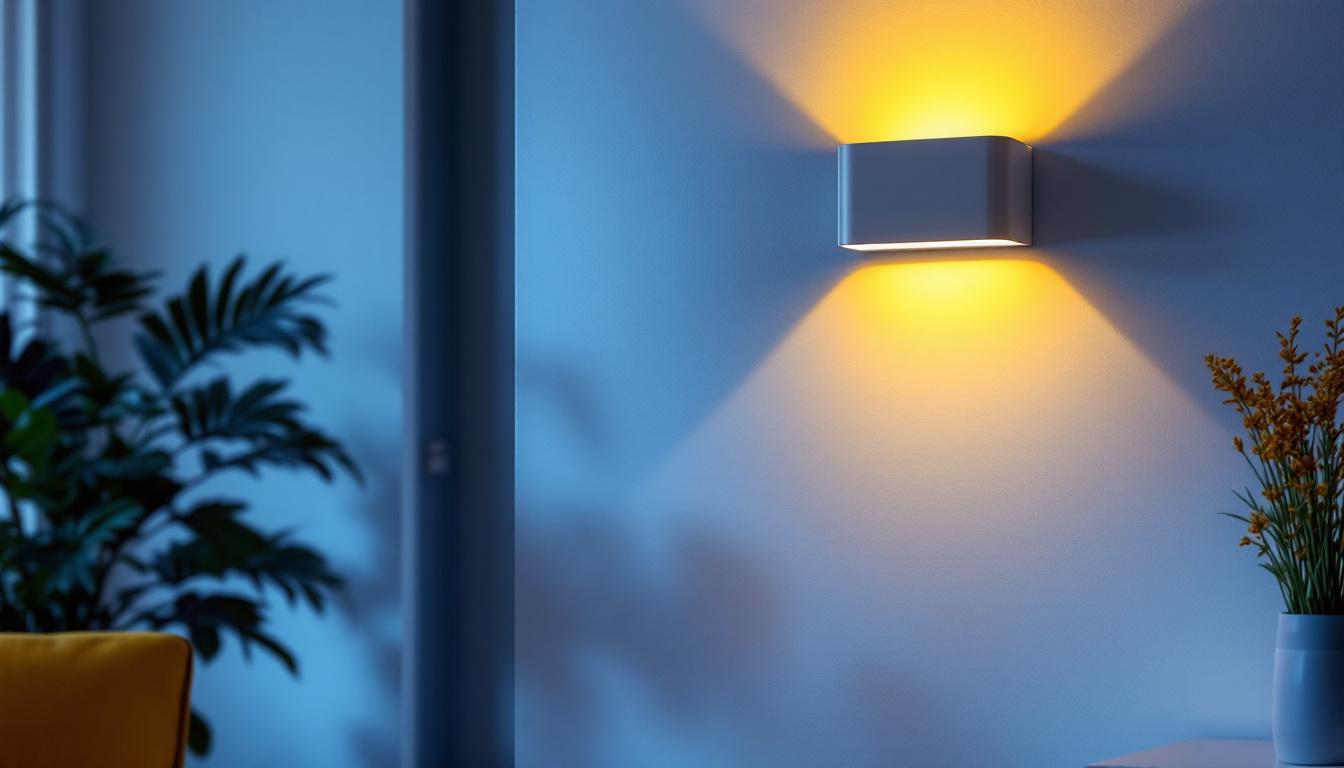
As the demand for energy-efficient lighting solutions continues to grow, understanding lumens and their impact on brightness is essential for lighting contractors. This article provides insights into lumens, brightness examples, and effective training strategies to equip your team with the necessary knowledge and skills.
Lumens are the unit of measurement for the total amount of visible light emitted by a source. Unlike watts, which measure energy consumption, lumens focus solely on the light output. This distinction is crucial for contractors aiming to provide clients with energy-efficient solutions without sacrificing brightness. By prioritizing lumens over watts, professionals can guide their clients toward lighting options that not only save on energy costs but also enhance the overall aesthetic and functionality of a space.
When discussing brightness, it’s essential to consider the context. A well-lit room can enhance productivity, create a welcoming atmosphere, and improve safety. Therefore, understanding how different lumen outputs affect various environments is key to delivering optimal lighting solutions. For instance, in a home office, a balance of brightness can help reduce fatigue during long working hours, while in a retail space, strategically placed lighting can draw attention to products and create an inviting shopping experience.
Different types of lighting fixtures produce varying amounts of lumens. For example, an incandescent bulb typically emits around 800 lumens, while a compact fluorescent lamp (CFL) may produce the same brightness with only 13-15 watts of power. On the other hand, LED bulbs can deliver 800 lumens using just 10 watts, making them a popular choice for energy efficiency. The longevity of LED bulbs, often lasting up to 25,000 hours, further enhances their appeal, as they reduce the frequency and cost of replacements.
In commercial settings, understanding how to balance lumens across different types of fixtures is vital. For instance, a conference room may require a combination of ambient lighting and task lighting, necessitating a careful calculation of lumens to ensure both functionality and comfort. Additionally, the color temperature of the light can influence how brightness is perceived. Warmer tones may create a cozy environment, while cooler tones can enhance alertness and focus, making it essential to consider both lumens and color temperature in the design process.
To provide a clearer picture of how lumens translate into brightness, here are some common examples:
Training your team on the intricacies of lumens and brightness is essential for providing high-quality service to clients. A well-informed team can make better recommendations and help clients understand their lighting needs.
Effective training should encompass both theoretical knowledge and practical applications. Here are some strategies to consider when developing a training program.
A well-structured curriculum should cover the fundamentals of lumens, including how to measure and compare different light sources. Incorporating hands-on activities, such as measuring lumens with light meters, can enhance understanding and retention.
Additionally, consider including case studies that illustrate real-world applications of lumens in various settings. This approach helps team members visualize how to apply their knowledge in practical scenarios, making the training more relevant and engaging. For example, analyzing lighting in residential versus commercial spaces can highlight the varying requirements and preferences of different clients, allowing team members to tailor their recommendations accordingly.
Visual aids can significantly enhance the learning experience. Use charts, graphs, and videos to demonstrate how different lighting solutions impact brightness. For instance, showing a side-by-side comparison of lumens emitted by various bulbs can help team members grasp the concept more effectively.
Demonstrations using actual lighting fixtures can also be beneficial. Set up different types of bulbs in a controlled environment and allow team members to observe the differences in brightness firsthand. This experiential learning can reinforce theoretical concepts and foster a deeper understanding of lumens. Furthermore, consider incorporating augmented reality (AR) tools that allow team members to visualize how different lighting options would look in various environments, making the training even more interactive and engaging.
Lighting technology is constantly evolving, making it essential for your team to stay updated on the latest trends and innovations. Encourage continuous learning through workshops, webinars, and industry conferences. Providing access to online resources, such as articles and videos, can also support ongoing education.
Additionally, consider establishing a mentorship program within your organization. Pairing less experienced team members with seasoned professionals can facilitate knowledge sharing and foster a culture of learning. This not only aids in skill development but also builds camaraderie and teamwork, as mentors can share their experiences and insights into the nuances of lighting design and client interaction. Regularly scheduled check-ins or knowledge-sharing sessions can further enhance this initiative, allowing for a dynamic exchange of ideas and best practices that keep the entire team informed and inspired.
Understanding lumens is not just about measurement; it’s about applying that knowledge to create effective lighting designs. Here are some practical applications to consider when designing lighting solutions for clients.
When designing a lighting plan, calculating the required lumens for each space is crucial. Start by determining the square footage of the area and the desired foot-candle level, which is the amount of light falling on a surface. For example, a living room may require 10-20 foot-candles, while a kitchen may need 30-50 foot-candles.
Once you have the desired foot-candle level, multiply it by the square footage to determine the total lumens needed. This calculation will guide your selection of fixtures and help ensure that the space is adequately lit.
While brightness is essential, aesthetics should not be overlooked. The goal is to create an inviting atmosphere while meeting functional lighting needs. Consider using dimmable fixtures or layering different types of lighting to achieve the desired effect.
For instance, in a dining area, ambient lighting can create a warm atmosphere, while task lighting can be used for specific activities, such as reading or working on a project. Balancing these elements will enhance the overall experience for occupants.
Every client has unique preferences and needs when it comes to lighting. Engaging in open discussions about their expectations can provide valuable insights into how to tailor your lighting solutions. Some clients may prioritize energy efficiency, while others may focus on aesthetics or functionality.
By understanding these preferences, you can recommend lighting solutions that align with their vision while still adhering to best practices regarding lumens and brightness. This personalized approach can lead to higher client satisfaction and long-term relationships.
Even experienced lighting contractors can make mistakes when it comes to lumens and brightness. Being aware of common pitfalls can help your team avoid these errors and deliver better results.
One common mistake is relying solely on a single type of lighting, such as overhead fixtures. Layered lighting, which includes ambient, task, and accent lighting, creates a more dynamic and functional space. Failing to incorporate different lighting layers can lead to uneven illumination and a less inviting atmosphere.
Encourage your team to think holistically about lighting design. By considering how different layers can work together, they can create more balanced and aesthetically pleasing environments.
Before finalizing a lighting design, it’s essential to test the proposed solutions in the actual environment. What looks good on paper may not translate well in reality. Encourage your team to conduct mock-ups or use adjustable fixtures to test brightness levels and overall aesthetics.
This testing phase allows for adjustments and refinements, ensuring that the final design meets both functional and aesthetic needs.
Client feedback is invaluable in the lighting design process. Ignoring their input can lead to dissatisfaction and missed opportunities for improvement. Encourage open communication with clients throughout the project, soliciting their opinions on brightness levels and fixture choices.
By actively involving clients in the decision-making process, contractors can foster a collaborative atmosphere and ensure that the final design aligns with their expectations.
Understanding lumens and their impact on brightness is crucial for lighting contractors. By training your team effectively, you can enhance their knowledge and skills, enabling them to deliver exceptional lighting solutions tailored to client needs.
Incorporating hands-on training, visual aids, and continuous learning opportunities will empower your team to stay informed and adaptable in a rapidly evolving industry. By applying this knowledge in practical settings, they can create well-lit environments that enhance both functionality and aesthetics.
Ultimately, investing in your team’s understanding of lumens and brightness will lead to improved client satisfaction and a strong reputation in the lighting contracting field. Embrace the opportunity to educate and empower your team, and watch your business thrive.
Ready to elevate your lighting game and provide your clients with the best in spec-grade lighting? Look no further than LumenWholesale, where we offer an extensive selection of top-quality lighting products at unbeatable wholesale prices. Say goodbye to middleman markups and hello to reliable, high-performance lighting that meets the highest industry standards. Take advantage of our hassle-free bulk buying with free shipping and ensure your projects shine with premium lighting at the best value. Don’t compromise on quality or affordability. Discover the LumenWholesale difference today and make every space brilliantly efficient.
Discover essential insights and expert tips on selecting and installing stainless steel bathroom light fixtures.

Discover the ultimate resources lighting contractors rely on to master their craft.

Discover essential tips for selecting and installing wall light LEDs to ensure your lighting projects are both cost-effective and visually stunning.

Discover essential insights on work lights near me for lighting contractors.